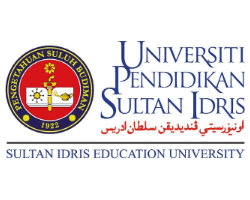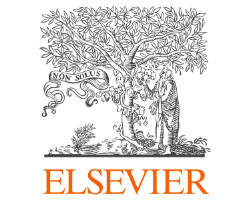Worldview ‘Mali’ in the Local Wisdom of ‘Penganan’ Iban in Sarawak: an Intangible Heritage Study
Worldview Mali dalam Kearifan Tempatan Penganan Iban di Sarawak: Satu Penelitian Warisan Tidak Ketara
Abstract
Masyarakat Iban di Sarawak memiliki demensi atau pandangan yang tersendiri dalam menginterprestasi kepercayaan mereka terhadap dunia dan kehidupan. Kepercayaan atau worldview tersebut memiliki nilai yang signifikan dalam manifestasi kebudayaan ketara dan tidak ketara masyarakat Iban. Oleh itu, penyelidikan ini adalah bersifat etnografi yang memfokuskan kepada kepercayaan Mali dalam kearifan tempatan membuat Penganan iaitu sejenis kuih tradisional Iban. Pendekatan penyelidikan ini adalah menggunakan kaedah kualitatif iaitu dengan melakukan kerja lapangan, mendokumentasi dan menemu bual informan yang mempunyai kepakaran dalam budaya Iban. Kawasan penyelidikan iaitu di Lubok Antu, Betong, Sri Aman dan Limbang telah dipilih sebagai lokasi penyelidikan untuk mendapatkan kepelbagaian data dari setiap penempatan geografi masyarakat Iban. Tujuan penyelidikan ini adalah sebagai satu usaha untuk mengarkibkan dan mengkonservasi kepercayaan Mali sebagai sebuah warisan tidak ketara. Hasil dapatan mendapati bahawa, kepercayaan Mali masih menjadi sebuah warisan dalam bentuk kolektif memori dan diamalkan dalam kehidupan masyarakat Iban kini walaupun mereka telah menganuti agama baharu iaitu agama Islam dan Kristian. Melalui penyelidikan ini diharapkan mampu memberikan satu kefahaman yang komprenhensif mengenai adat resam dan kepercayaan masyarakat pribumi di Malaysia, khususnya masyarakat Iban di Sarawak.
Worldview ‘Mali’ in the Local Wisdom of ‘Penganan’ Iban in Sarawak: an Intangible Heritage Study
Abstract: The Iban in Sarawak possessed their own dimension or perspectives in interpreting belief in the world and life. For the Iban, the belief or worldview have significant value in manifesting tangible and intangible culture. Therefore, this is an ethnography studies focus the belief of Mali from the local expertise in making the traditional Iban food Penganan. This study applied the qualitative approach by conducting field work, documentation and interview with informant adept in the Iban culture. The studies sites were Lubok Antu, Betong, Sri Aman and Limbang for the purpose of collecting numerous data from each Iban’s settlement. This study is an effort to archive and conserve the belief of Mali as an intangible culture. The studies have discovered the belief of Mali is still regard as a heritage in the form of collective memory. This belief is still practice by the Iban although they have converted to the new religion of Islam and Christian. It is this studies aspiration to produce a comprehensive understanding concerning the custom and belief of the indigenous community in Malaysia especially the Iban in Sarawak.
Keywords: Custom, Iban, Indigenous Belief, Traditional Culture, Worldview.
Downloads
References
C. Gerard, Heritage, Museums and Galleries: An Introductory Reader.UK: Routledge, 2005.
Y. Saleh, Pengenalan Pemuliharaan Bandar. Malaysia: Dewan Bahasa dan Pustaka, 2010.
Y. M. Yusoff and H. Dollah, “Akta Warisan Kebangsaan, 2005: Tinjauan Sepintas Lalu National Heritage Act, 2005: A Review,” Jurnal Melayu, 2011.
M. Y. M. Yusoff, 2018. “Pemuliharaan Warisan Budaya Melalui Perundangan Warisan Dan Agensi Pelaksana Di Malaysia,” Jurnal Melayu, vol. 2, no. 17, 2018.
M. Yuszaidy, M. Yusoff, H. Dollah dan A. S. Kechot, “Akta Warisan Kebangsaan 2005: Tinjauan Sepintas Lalu,” Jurnal Melayu, 2011.
J. M. Flavier, A. D. Jesus and C. S. Navarro, “The Regional Program for The Promotion of Indigenous knowledge in Asia,” The Cultural Dimension of Development: Indigenous Knowledge Systems, Intermediate Technology Publications, London, 1995.
L. Hiwasaki, E. Luna and R. Shaw, “Process for Integrating Local and Indigenous Knowledge with Science for Hydro-Meteorological Disaster Risk Reduction and Climate Change Adaptation in Coastal and Small Island Communities. International Journal of Disaster Risk Reduction,” vol. 10, pp. 15-27, 2014.
A. Rahim and R. Affandi, Contemporary Tafaqquh Programme Module in Mosques: A Review and Proposal/Alias Azhar and Rahimin Affandi Abd. Rahim,” Esteem Academic Journal, vol. 9, no. 2, pp. 1-15, 2013.
Ninian Smart, the World's Religions. UK: Cambridge University Press, 1998.
H. Smith, Why Religion Matters: The Fate of the Human Spirit in an Age of Disbelief. New York: Harper Collins, 2001
S. Güneser, A. Atici, I. Cengizler and N. Alparslan, “Inhalant Allergens: As A Cause of Respiratory Allergy in East Mediterranean Area, Turkey,” Allergologia at Immunopathologia, vol. 24, no. 3, pp. 116-119, 1996.
A. A. A. Pawi, “Weltanschauung dan Manifestasi Kepercayaan Tradisi Etnik di Sarawak,” Jurnal Antarabangsa Dunia Melayu, vol. 6, no. 2, 2013.
A. Durin, Tikar Bemban. Kota Samarahan: Universiti Malaysia Sarawak, 2014.
N. Tugang, Pua: Identiti dan Budaya Masyarakat Iban. Kota Samarahan: Penerbit Universiti Malaysia Sarawak, 2014.
Wani, C. Mansukhlal, H. L. Taylor, M. E. Wall, P. Coggon and A. T. M. Phail, “Plant Antitumor Agents. VI. Isolation and Structure of Taxol, a Novel Antileukemic and Antitumor Agent from Taxus Brevifolia,” Journal of the American Chemical Society, vol, 93, no. 9, pp. 2325-2327, 1971.
S. Goggin, “Human Rights And ‘Primitive’culture: Misrepresentations of Indigenous Life,” The International Journal of Human Rights, vol. 15, no. 6, pp. 873-886, 2011.
G. Kiyai and N. Tugang, “The Iban Journey of Afterlife: Artifak Iringan Tukang Sabak,” Journal of Borneo-Kalimantan, vol. 5, no. 1, pp. 7-7, 2019.
B. Sandin, Raja Durong. Borneo: Borneo Literature Bureau, 1964.
M. Z. Daud, A. M. S. N. Wahid and R. Gedat, “Penggunaan Eufemisme Dalam Kalangan Penutur Iban,” International Journal of Language Education and Applied Linguistics, 2018.
E. Jensen, the Iban and Their Religion. Oxford: Clarendon Press, 1974.
V. Béguet, “Iban petara as transformed ancestors,” Ancestors in Borneo Societies: Death, Transformation, and Social Immortality, pp. 243-277, 2012.
P. M. Kedit, Iban Bejalai. Kuching: Sarawak Literary Society by Ampang Press Sdn. Bhd, 1993.
Gomes, E. Herbert. Seventeen years among the Sea Dyaks of Borneo: a Record of Intimatea Association with the Natives of the Bornean Jungles. Australia: Seeley & Company, 1911.
C. A. Osup, “Melahirkan Anak Dan Ritual Di Peringkat Awal Bayi Dalam Masyarakat Iban Di Sarawak,” Jurnal Peradaban Melayu, vol. 11, pp. 1-10, 2016.
B, Garry, E. B. Tomlinson and M. Roth, “The Association Between Quantitative Measures of Dementia and of Senile Change in the Cerebral Grey Matter of Elderly Subjects,” The British Journal of Psychiatry, vol. 114, no. 512, pp. 797-811, 1968.
G. N. Appell, “Iban Studies: Their Contribution to Social Theory and the Ethnography of Other Borneo Societies,” The Encyclopedia of Iban Studies: Iban History, Society and Culture, pp. 741-785, 2001.
R. Soda, “Rural-Urban Migration of the Iban of Sarawak and Changes in Long-House Communities. Geographical Review of Japan, vol. 74, no. 1, pp. 92-112, 2001.
Tieman, L. Beth, J. P. Robert and A. C. Sutlive, “Assessment of Motor Development and Function in Preschool Children,” Mental Retardation and Developmental Disabilities Research Reviews, vol. 11, no. 3, pp. 189-196, 2005.
C. Sather, “All Threads Are White”: Iban Egalitarianism Reconsidered. Origins, Ancestry and Alliance, pp. 70-110, 1996.
P. Beginda and B. Bala, “Pengaruh Demografi Terhadap Perubahan Sosio-Politik Orang Iban di Sarawak,” Jurnal Kajian Sejarah & Pendidikan Sejarah, vol. 6, no. 1, 2018.
B. Gould, Sabine, and C. A. Bampfylde. A History of Sarawak under Its Two White Rajahs. London: Henry Sotheran & Company, pp. 1839-1908, 1909.
W. E. Hanson, J. W. Creswell, V. L. P. Clark, K. S. Petska, and J. D. Creswell, Mixed Methods Research Designs in Counseling Psychology. Journal of Counseling Psychology, vol. 52, no. 2, pp. 224, 2005.
K. Jasmi, Metodologi Pengumpulan Data dalam Penyelidikan Kualitatitif. Kursus Penyelidikan Kualitatif Siri 1, 2012.
N. W. Lund and M. Buckland, “Document, Documentation, and the Document Academy: Introduction,” Archival Science, vol. 8, vol. 3, pp. 161, 2008.
M. Buckland, “Document Theory,” KO Knowledge Organization, vol. 45, no. 5, pp. 425-436, 2018
G. Kiyai, “Tukang Sabak dalam budaya dan upacara Nyabak Masyarakat Iban di Sarawak: Satu Penelitian Awal,” KUPAS SENI: Jurnal Seni dan Pendidikan Seni, vol. 7, pp. 120-125, 2019.




















